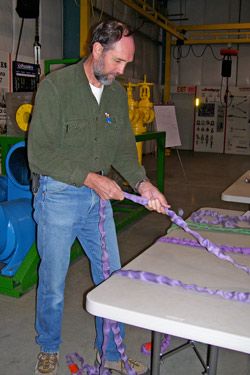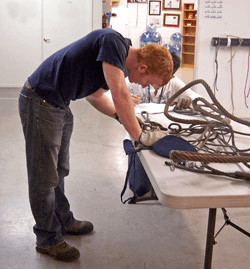Become a Successful Rigging Gear Inspector
Employees selected or assigned to be rigging gear inspectors must be committed to ensuring the integrity of the inspection by performing the work required in a competent manner. The knowledge needed to be competent to conduct the specific duties required of the rigging gear inspector can be gained by attending ITI’s (Industrial Training International) Rigging Gear Inspector Level I/II Course. This class offers an effective combination of classroom and hands-on practical training; students learn the skills and knowledge needed. This training program builds confidence in the rigging gear inspector to be able to make the decision to remove damaged, worn or defective rigging gear, hardware or below the hook lifting devices from service.
Students who attend this class whether they are from the different trades, tool room managers, production workers or qualified riggers return to the workplace confident in their knowledge and ability to recognize the different types of damage that occur. This damage can result from normal use or more commonly seen poor rigging practices. Each chapter of the ASME B30.9 Slings and B30.26 Rigging Hardware Safety Standards contain a section titled Operating Practices, located there is section called Rigging Practices with very helpful information on the proper usage of slings and rigging hardware.
A company’s experience modification factor or work history can be the difference in being successful in today’s competitive market. Plain and simple - allowing inspections of your lifting gear by rigging inspectors lacking certain qualities can have disastrous results. The folks on your team designated or appointed as rigging gear inspectors at a minimum need to be:
1) Committed to performing the work (yes that means no pencil whipping) required of the inspection.
2) Competent in their skills to recognize and correctly identify the condition of the rigging gear.
3) Confident in their knowledge of the applicable codes, standards and industry guidelines to determine if the conditions discovered during the inspection meet the criteria for removal from service or can be allowed to remain available for continued use.
The collective work of the crane and rigging team is compromised by allowing the qualified rigger or maintenance worker to employ rigging gear of any type that has not been inspected or inspected by a well meaning person who is limited by what they do not know. As rigging gear inspectors we must be committed, competent and confident to be successful in our craft.
Happy Rigging,






COMMENTS